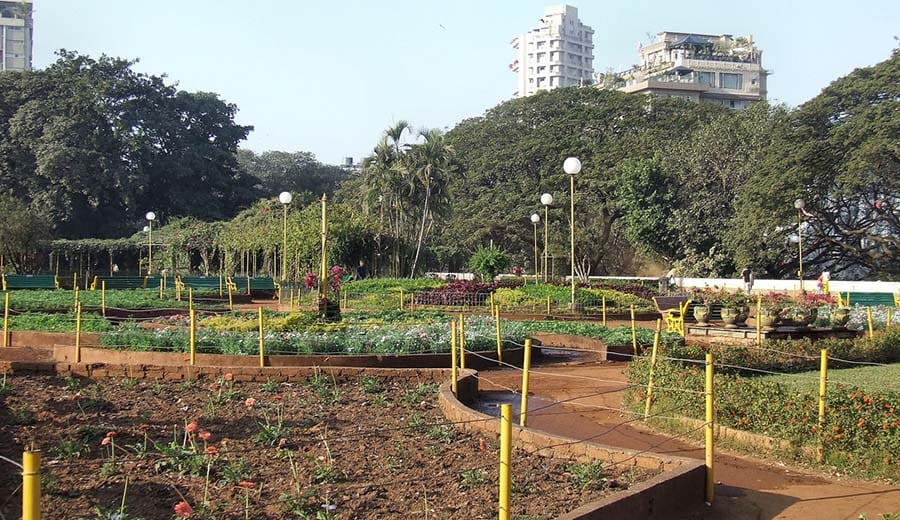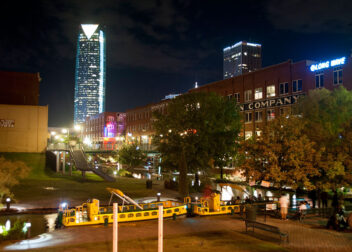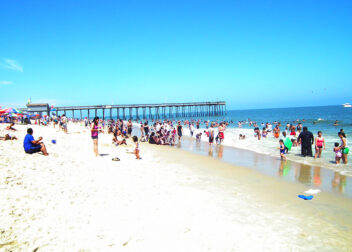Hanging Gardens
Hanging Gardens of Mumbai- Pherozeshah Mehta Gardens
The top of Malabar Hill is beautified by the Hanging Gardens of Mumbai. It is situated just to the west and just opposite Kamala Nehru Park. The Hanging Gardens is called Pherozeshah Mehta Gardens too. The most attractive feature of this garden is that it offers sunset views of the Arabian Sea. Another feature is that there are hedges carved and designed into wonderful animal shapes. In 1921 the park was laid by Ulhas Ghapokar over the main reservoir of Bombay. It was said that the park covered the contaminated water of the towers of Silence. If the park is seen from the top then the letters of Pherozeshah Mehta designed in cursive can be seen.
What to do
Hanging gardens in the city is the place where you can spend some time of the day if you are a citizen of Mumbai. It is a perfect place to stroll around, jogging, do yoga, or exercise. On the other hand, the place is also to do a family outing, doing picnic, or spend time with your kids. The scenario is really fascinating and you will be glad to spot the animal-shaped carvings. Tourists also find the place a nice option for passing time and watching the waves of the Arabian Sea. This is the perfect region for you if you are searching for a peaceful area away from the noisy crowd.
The place is most suitable for those who have a hobby in photography as the creative hedge structure offers a very beautiful background for shooting photographs. Moreover, you would be amazed to know that you are walking over an area under which there is a large reservoir. If tourists are wondering to have a close view of the sunset over the Arabian Sea then this is the, most suitable spot from where the sunset looks just magical and you will be fascinated by the beauty of nature. The park opens early in the morning to offer people fresh air ideal for jogging and doing yoga on the lap of nature.
Informative details
The park is mainly highlighted due to the animal-shaped hedges. The traveling time starts from 5 in the morning till 9 at night. It is open on all days of the week. The nearby tourist attractions are Banganga and Jain Temple. You can easily reach the park by your own car, public bus, and auto-rickshaw. If you are coming by train then the nearest railway station to the garden is the Grand road railway station. Charni road station to the west is also situated very near to the garden from where it requires 20 minutes to reach the spot.
The park is well connected by roads, therefore finding the way is not at all a problem. There are two roads from Marine Drive that leads to the garden. One is Walkeshwar road and the other is Ridge road. You can reach the spot on any of the roads. As it is situated along the shore of the Arabian Sea, it is best to hire an auto-rickshaw or taxi to reach there because then you can visit the place in a relaxed manner.
What to see
- The striking followers of the gardens of different and unique species.
- Animal-shaped creative topiaries.
- Clock located at the heart of the garden
- The boat house or the ‘old woman’s shoe crafted out of stone is the favorite of children.
- Watching the sunset in the evening is a lifetime experience.
- The park also affords a panoramic view of the city from the hilltop.
Built on the top of Malabar Hill the Hanging Gardens of Mumbai is a terrace garden created on top of Malabar Hill, due to which it holds such a name. The path inside the garden is very well maintained. A huge number of tourists find this place an interesting one to explore while they are in the city. So next time when you are in Mumbai, try to spend some time in this garden that offers so many things to do and see. Altogether it is a peaceful region free from any type of pollution.
History
The Hanging Gardens of Mumbai were built in the early 1880s and are named after Ferozeshah Mehta, a prominent leader of the Indian National Congress. The gardens were created as a result of public demand for a green space in the city and were designed to provide a peaceful environment for residents and visitors. Over the years, the gardens have undergone several renovations and upgrades, including the addition of a children’s playground, walking paths, and picnic areas. Today, the Hanging Gardens of Mumbai are considered a popular tourist attraction and are frequented by locals and visitors alike for their scenic beauty and serene environment.
Attractions at the Hanging Gardens
The Hanging Gardens offer several attractions to visitors, including:
- Terrace gardens – The gardens are terraced and feature lush greenery and a variety of colorful flowers.
- View of the Arabian Sea – The gardens are located on the slopes of Malabar Hill and offer a scenic view of the Arabian Sea and Mumbai city.
- Fountains – The gardens feature several fountains, adding to their beauty and providing a relaxing ambiance.
- Children’s playground – There is a children’s playground within the gardens, providing a fun and safe environment for kids to play.
- Picnic areas – The gardens offer several picnic areas, making them a popular destination for families and friends.
- Walking paths – There are walking paths within the gardens, allowing visitors to leisurely explore and take in the beauty of the surroundings.
Overall, the Hanging Gardens of Mumbai provide a peaceful escape from the bustling city and offer a serene environment for visitors to relax and enjoy the beauty of nature.
How to reach
The Hanging Gardens of Mumbai are located on the slopes of Malabar Hill in Mumbai, India. Visitors can reach the gardens by various modes of transportation:
- Local train – The nearest railway station to the Hanging Gardens is Charni Road, which is well connected to the rest of Mumbai.
- Bus – Mumbai has a well-developed public bus network and several buses stop near the gardens.
- Taxi/cab – Visitors can also hire a taxi or cab to reach the Hanging Gardens.
- Auto-rickshaw – Auto-rickshaws are readily available in Mumbai and are a convenient way to reach the gardens.
Visitors can also choose to walk to the gardens from nearby areas if they are staying nearby. Overall, the Hanging Gardens of Mumbai are easily accessible and well-connected to the rest of the city.
Best time to visit
The best time to visit the Hanging Gardens of Mumbai is from October to March, during the winter months. During this time, the weather is pleasant and the gardens are at their greenest, providing a scenic and picturesque environment for visitors.
However, visitors can also visit the gardens during the monsoon season from June to September, when the gardens are lush and lush with greenery.
It is recommended to avoid visiting the gardens during the summer months from April to May, as the weather is hot and humid, making it uncomfortable for visitors.
Overall, the best time to visit the Hanging Gardens of Mumbai depends on individual preferences and the type of experience a visitor is looking for. Whether it’s to escape the heat or to see the gardens in their greenest, the Hanging Gardens are a must-visit attraction in Mumbai all year round.
FAQ
Here are answers to some frequently asked questions about the Hanging Gardens of Mumbai:
- Is there an entry fee for the Hanging Gardens?
No, there is no entry fee to visit the Hanging Gardens.
- Are there restrooms or restrooms available at the gardens?
Yes, there are restrooms available at the Hanging Gardens for visitors to use.
- Is photography allowed at the Hanging Gardens?
Yes, photography is allowed at the Hanging Gardens, but visitors are asked to be respectful of the surroundings and not damage the plants or flowers.
- Are food and drinks available at the gardens?
Yes, there are food and drink vendors near the Hanging Gardens, offering snacks and refreshments to visitors.
- Is the garden accessible to people with disabilities?
Yes, the Hanging Gardens have been designed to be accessible to people with disabilities, with ramps and designated areas for people with disabilities.
Overall, the Hanging Gardens of Mumbai provide a peaceful and serene environment for visitors to enjoy, with facilities and services available to ensure a comfortable visit.



